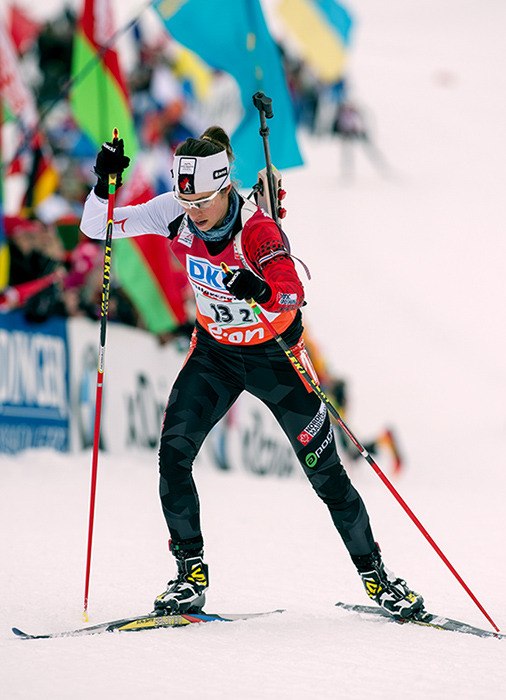The Sochi biathlon venue, the testing ground of valley-connected biathlete Megan Imrie and dozens of other Olympic biathletes, has already created a social media stir.
Although there are several images of the now-
infamous double toilet bathroom stalls from at least a couple Olympic venues, the original photo to
create an online buzz was of the Laura Biathlon and Ski Complex near Krasnaya Polyana.
The venue will host all the Olympic biathlon events — the men’s and women’s sprint race,pursuit race, individual race, mass-start race and the men’s, women’s and mixed relays events. It is also the site of all of the nordic ski events and some of the nordic combined events.
The track has been designed for year-round use – snow in the winter and asphalt in the summer. It is partially situated on a ridge high above the surrounding countryside, in an effort to ensure there is as much natural snow as possible, given the Sochi area’s relatively balmy climate.
The purpose-built complex was tested by international biathletes and cross-country skiers for the first time just a year ago and most who’ve been on the tracks rated them as challenging. The complex includes two stadiums and has separate tracks for biathlon and for cross-country skiing. The sprint (in which Ms. Imrie recently participated) is three loops of a 2.5-kilometre track with one prone and one standing shooting bouts, with each missed shot requiring the biathlete to ski a 150-metre penalty loop. (Each penalty loop takes an average biathlete about 25 seconds to do).
The pursuit (for which the top 60 sprint finishers qualify) is four laps of the 2.5-kilometre course, with four bouts of shooting (two prone, two standing).
“Shooting is really mental and there’s a lot of pressure. With four shooting bouts, there’s a lot of room for error,” she said.
Racers start the pursuit in staggered order, based on their finish times in the sprint, with the sprint winner leaving first. The pursuit (which took place yesterday) is a first-across the finish line event, so the other biathletes are literally pursuing the leader.
“It’s almost always the same winner (in the sprint and pursuit),” said Ms. Imrie.
The women’s individual race, set for Friday, February 14th, is 15 kilometres long, consisting of five laps of a three-kilometre track, with four shooting bouts (two prone and two standing), but in the individual race there is no penalty lap to ski for each missed shot. Instead,
biathletes have one minute added to their overall time for each missed shot — a big difference compared with the 25 seconds it takes a biathlete to ski a penalty loop for each missed shot in the sprint event.
“The individual race is heavily weighted to good shooters,” said Ms. Imrie. “It comes and goes, right now my strength is more on the skiing side. But you really need to do both. If you’re not shooting 90 percent (accuracy), you’re really lowering your chances,” she said.
The mixed relay race, set for Wednesday, February 19th, is done by teams of two men and two women, with the women skiing three lap of two-kilometres and the men skiing three laps of 2.5 kilometres.
The women’s 4 by 6-kilometre relay race, set for Friday, February 21st, consists of four biathletes, each skiing three two-kilometre laps with two shoot bouts, one prone and one standing.
